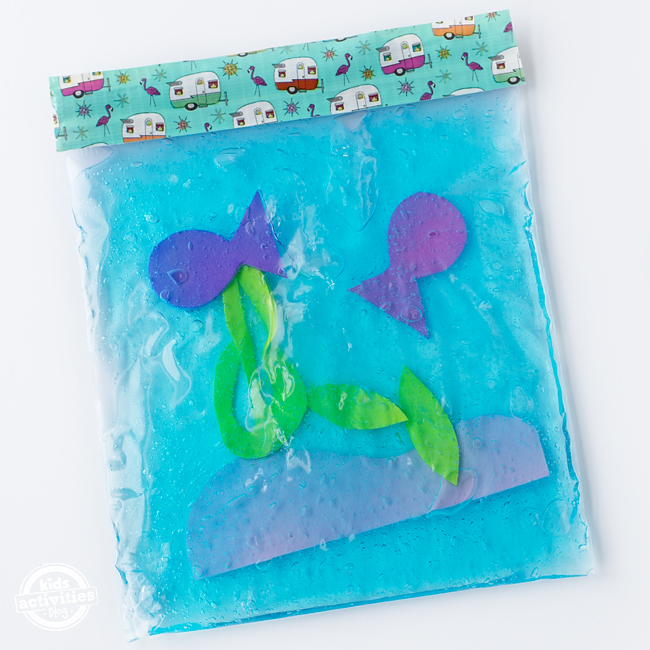Introduction: Sensory Play Made Simple
Looking for a budget-friendly and creative way to engage your child in sensory play? Look no further! Squishy sensory bags are not only easy to make but also offer hours of entertainment and learning opportunities. This article will guide you through the process of making your own squishy sensory bags, ensuring a fun and rewarding experience for both you and your child. So let’s dive into the squishing sensations that await!
Squishy Sensory Bags that are Easy to Make: A Step-by-Step Guide
Gathering Materials
Before you start, gather the following supplies:
- Sturdy zip-top plastic bags
- Fillers (e.g., hair gel, dish soap, cornstarch, or water beads)
- Mix-ins (e.g., glitter, food coloring, foam shapes, or small toys)
- Duct tape or masking tape
Choosing Your Filler and Mix-ins
- Hair gel: Provides a smooth and slippery texture, perfect for swirling colors and glitter.
- Dish soap: Creates a bubbly, foamy effect when mixed with a small amount of water.
- Cornstarch: Offers a unique, non-Newtonian texture that becomes firm when pressure is applied.
- Water beads: Adds a fascinating, tactile element as they squish and roll inside the bag.
Assembling Your Squishy Sensory Bag
- Step 1: Fill the zip-top bag with your chosen filler, leaving some space for movement.
- Step 2: Add mix-ins like glitter, food coloring, or small toys, and seal the bag tightly.
- Step 3: Remove excess air, and double-check the seal for any leaks.
- Step 4: Secure the edges with duct tape or masking tape for added durability.
Tips and Tricks for Squishy Sensory Bag Success
- Use double-bagged layers for extra security against leaks.
- Experiment with various fillers and mix-ins for a diverse sensory experience.
- Place the sensory bag on a light table or under a flashlight to enhance visual effects.
- Create themed sensory bags, like ocean scenes or outer space, for added fun.
The Benefits of Squishy Sensory Bags for Children
Squishy sensory bags offer numerous benefits for children:
- Enhances fine motor skills and hand-eye coordination.
- Encourages exploration and curiosity.
- Provides a calming, stress-relieving experience.
- Promotes language development through descriptive words and phrases.
Wrapping Up: Squishy Sensory Bags that are Easy to Make
Creating squishy sensory bags at home is a fun, affordable, and engaging way to foster sensory exploration for your child. By following this simple guide, you’ll be well on your way to making countless squishy sensations that will keep your little one entertained for hours on end. So go ahead, unleash your creativity, and get squishing!
FAQs
- Q: Are squishy sensory bags safe for all ages?
A: While sensory bags can be enjoyed by children of all ages, always supervise young children during playtime to ensure they don’t accidentally puncture the bag or put small mix-ins in their mouths.
- Q: How do I clean and store my squishy sensory bags?
A: Wipe the sensory bag with a damp cloth to clean it, and store it in a cool, dry place. Make sure to inspect the bag for leaks before each use. - Q: Can I reuse my squishy sensory bags?
A: Yes, as long as the bag remains intact and leak-free, you can reuse it. To switch up the sensory experience, simply empty the contents and start fresh with new fillers and mix-ins. - Q: What should I do if the sensory bag leaks?
A: If your sensory bag leaks, dispose of the contents carefully, clean the area thoroughly, and double-check the sealing and reinforcement of any future bags you make. - Q: Can I involve my child in the process of making the sensory bags?
A: Absolutely! Involving your child in the creation process can make the sensory play even more engaging and fun. Just make sure to supervise them closely, especially when handling small mix-ins or potentially messy fillers.


Add Comment